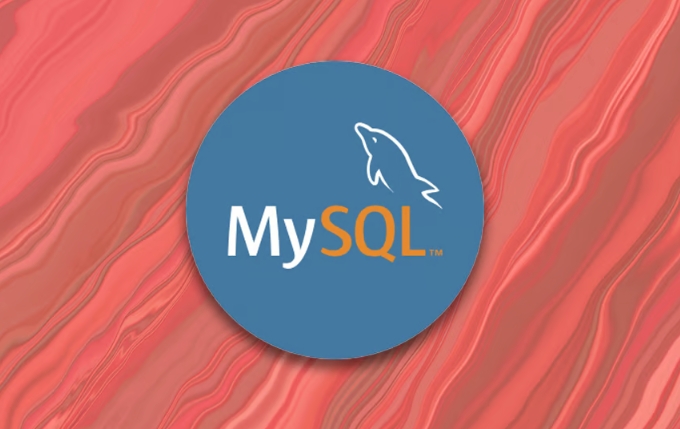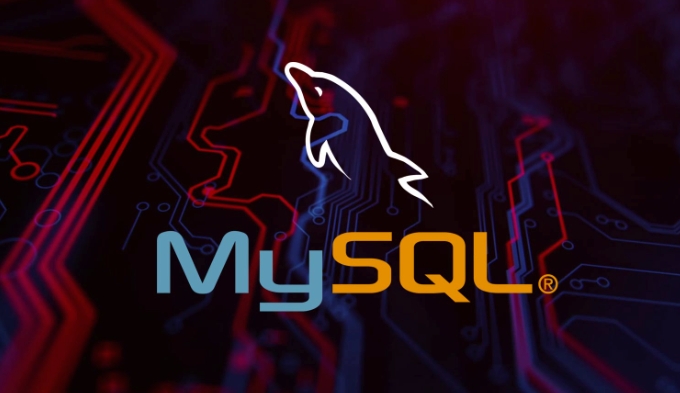ENUM is suitable for fixed options, VARCHAR is suitable for variable content. 1. ENUM uses integer storage to save space and has high query efficiency, suitable for fixed values such as gender and status; 2. VARCHAR stores strings more flexible, suitable for fields with variable content such as usernames and addresses; 3. ENUM needs to lock the table to affect maintenance when modifying enumeration values, and VARCHAR does not need to change the table structure if it adds or changes the values; 4. ENUM is more efficient in comparison and indexing, but the application layer handles VARCHAR more friendly and does not require additional mapping.

ENUM and VARCHAR are two common options when selecting a field type in MySQL. They each have applicable scenarios, the key lies in the characteristics of the data and how it is used. Simply put: if the field value is a few fixed and limited options, ENUM is preferred; if the content may change or be more common, it is more appropriate to use VARCHAR .

1. Storage and performance differences
ENUM actually uses integers to represent each enum value at the bottom, so it saves more space than VARCHAR. For example, if you define ENUM('apple', 'banana', 'orange') , the database will use 1, 2, and 3 to represent these three values respectively.
VARCHAR directly stores the string itself, and the length is determined by the actual content (plus a little extra overhead). If your value changes frequently or the number is not fixed, VARCHAR is obviously more flexible.

Tips:
- ENUM is suitable for fields such as "gender" and "status" where values are basically unchanged.
- VARCHAR is more suitable for data such as "username" and "address" with variable content and uncertain lengths.
2. Maintainability comparison
The disadvantages of ENUM are also obvious: Once the enum value is to be modified, the entire ENUM list must be redefined with the ALTER TABLE statement. This operation may lock the table for a long time when the table is large, affecting online services.

VARCHAR does not have this problem at all. As long as the logic layer is handled properly, adding or changing values does not require a table structure.
FAQ:
- What should I do if the enum value is written incorrectly? Only ENUM columns can be rebuilt.
- How does the application layer determine whether an enum value is supported? It is prone to hard-code problems.
3. Query and index efficiency
Because the ENUM field is essentially an integer, it is slightly more efficient when comparing and sorting. Especially when indexing is added, integers are much faster than strings.
Although VARCHAR can also be indexed, if it is a longer string, the index size will be larger and the query efficiency may be reduced.
For example:
- Query
status = 'active'(VARCHAR) vsstatus = 2(ENUM), which executes faster.- If you often query or sort the condition based on this field, the advantages of ENUM will be more obvious.
4. Convenience in application layer processing
From a development perspective, VARCHAR is more "friendly". Because it is a string, no additional mapping is required whether it is splicing, judging or displaying in the code. ENUM often requires a layer of mapping conversion at the front and back ends, otherwise you will see numbers instead of original values.
This also means that if you use an ORM framework, VARCHAR is usually easier to handle, and ENUM may need to be specially configured to show the correct meaning.
Basically these differences. When choosing ENUM or VARCHAR, it mainly depends on whether your data is stable, whether it changes frequently, and whether it has performance requirements. Sometimes both can be used, and it can be determined according to team habits.
The above is the detailed content of mysql enum vs varchar. For more information, please follow other related articles on the PHP Chinese website!

Hot AI Tools

Undress AI Tool
Undress images for free

Undresser.AI Undress
AI-powered app for creating realistic nude photos

AI Clothes Remover
Online AI tool for removing clothes from photos.

Clothoff.io
AI clothes remover

Video Face Swap
Swap faces in any video effortlessly with our completely free AI face swap tool!

Hot Article

Hot Tools

Notepad++7.3.1
Easy-to-use and free code editor

SublimeText3 Chinese version
Chinese version, very easy to use

Zend Studio 13.0.1
Powerful PHP integrated development environment

Dreamweaver CS6
Visual web development tools

SublimeText3 Mac version
God-level code editing software (SublimeText3)

Hot Topics
 What is GTID (Global Transaction Identifier) and what are its advantages?
Jun 19, 2025 am 01:03 AM
What is GTID (Global Transaction Identifier) and what are its advantages?
Jun 19, 2025 am 01:03 AM
GTID (Global Transaction Identifier) ??solves the complexity of replication and failover in MySQL databases by assigning a unique identity to each transaction. 1. It simplifies replication management, automatically handles log files and locations, allowing slave servers to request transactions based on the last executed GTID. 2. Ensure consistency across servers, ensure that each transaction is applied only once on each server, and avoid data inconsistency. 3. Improve troubleshooting efficiency. GTID includes server UUID and serial number, which is convenient for tracking transaction flow and accurately locate problems. These three core advantages make MySQL replication more robust and easy to manage, significantly improving system reliability and data integrity.
 What is a typical process for MySQL master failover?
Jun 19, 2025 am 01:06 AM
What is a typical process for MySQL master failover?
Jun 19, 2025 am 01:06 AM
MySQL main library failover mainly includes four steps. 1. Fault detection: Regularly check the main library process, connection status and simple query to determine whether it is downtime, set up a retry mechanism to avoid misjudgment, and can use tools such as MHA, Orchestrator or Keepalived to assist in detection; 2. Select the new main library: select the most suitable slave library to replace it according to the data synchronization progress (Seconds_Behind_Master), binlog data integrity, network delay and load conditions, and perform data compensation or manual intervention if necessary; 3. Switch topology: Point other slave libraries to the new master library, execute RESETMASTER or enable GTID, update the VIP, DNS or proxy configuration to
 How to connect to a MySQL database using the command line?
Jun 19, 2025 am 01:05 AM
How to connect to a MySQL database using the command line?
Jun 19, 2025 am 01:05 AM
The steps to connect to the MySQL database are as follows: 1. Use the basic command format mysql-u username-p-h host address to connect, enter the username and password to log in; 2. If you need to directly enter the specified database, you can add the database name after the command, such as mysql-uroot-pmyproject; 3. If the port is not the default 3306, you need to add the -P parameter to specify the port number, such as mysql-uroot-p-h192.168.1.100-P3307; In addition, if you encounter a password error, you can re-enter it. If the connection fails, check the network, firewall or permission settings. If the client is missing, you can install mysql-client on Linux through the package manager. Master these commands
 Why is InnoDB the recommended storage engine now?
Jun 17, 2025 am 09:18 AM
Why is InnoDB the recommended storage engine now?
Jun 17, 2025 am 09:18 AM
InnoDB is MySQL's default storage engine because it outperforms other engines such as MyISAM in terms of reliability, concurrency performance and crash recovery. 1. It supports transaction processing, follows ACID principles, ensures data integrity, and is suitable for key data scenarios such as financial records or user accounts; 2. It adopts row-level locks instead of table-level locks to improve performance and throughput in high concurrent write environments; 3. It has a crash recovery mechanism and automatic repair function, and supports foreign key constraints to ensure data consistency and reference integrity, and prevent isolated records and data inconsistencies.
 Why do indexes improve MySQL query speed?
Jun 19, 2025 am 01:05 AM
Why do indexes improve MySQL query speed?
Jun 19, 2025 am 01:05 AM
IndexesinMySQLimprovequeryspeedbyenablingfasterdataretrieval.1.Theyreducedatascanned,allowingMySQLtoquicklylocaterelevantrowsinWHEREorORDERBYclauses,especiallyimportantforlargeorfrequentlyqueriedtables.2.Theyspeedupjoinsandsorting,makingJOINoperation
 How to add the MySQL bin directory to the system PATH
Jul 01, 2025 am 01:39 AM
How to add the MySQL bin directory to the system PATH
Jul 01, 2025 am 01:39 AM
To add MySQL's bin directory to the system PATH, it needs to be configured according to the different operating systems. 1. Windows system: Find the bin folder in the MySQL installation directory (the default path is usually C:\ProgramFiles\MySQL\MySQLServerX.X\bin), right-click "This Computer" → "Properties" → "Advanced System Settings" → "Environment Variables", select Path in "System Variables" and edit it, add the MySQLbin path, save it and restart the command prompt and enter mysql--version verification; 2.macOS and Linux systems: Bash users edit ~/.bashrc or ~/.bash_
 What are the transaction isolation levels in MySQL, and which is the default?
Jun 23, 2025 pm 03:05 PM
What are the transaction isolation levels in MySQL, and which is the default?
Jun 23, 2025 pm 03:05 PM
MySQL's default transaction isolation level is RepeatableRead, which prevents dirty reads and non-repeatable reads through MVCC and gap locks, and avoids phantom reading in most cases; other major levels include read uncommitted (ReadUncommitted), allowing dirty reads but the fastest performance, 1. Read Committed (ReadCommitted) ensures that the submitted data is read but may encounter non-repeatable reads and phantom readings, 2. RepeatableRead default level ensures that multiple reads within the transaction are consistent, 3. Serialization (Serializable) the highest level, prevents other transactions from modifying data through locks, ensuring data integrity but sacrificing performance;
 What are the ACID properties of a MySQL transaction?
Jun 20, 2025 am 01:06 AM
What are the ACID properties of a MySQL transaction?
Jun 20, 2025 am 01:06 AM
MySQL transactions follow ACID characteristics to ensure the reliability and consistency of database transactions. First, atomicity ensures that transactions are executed as an indivisible whole, either all succeed or all fail to roll back. For example, withdrawals and deposits must be completed or not occur at the same time in the transfer operation; second, consistency ensures that transactions transition the database from one valid state to another, and maintains the correct data logic through mechanisms such as constraints and triggers; third, isolation controls the visibility of multiple transactions when concurrent execution, prevents dirty reading, non-repeatable reading and fantasy reading. MySQL supports ReadUncommitted and ReadCommi.






